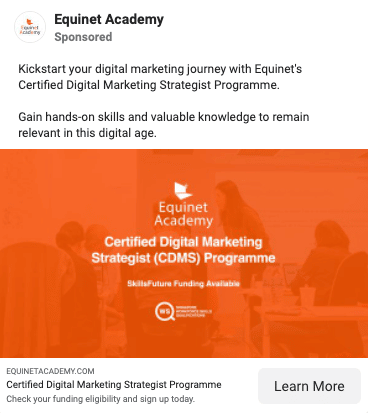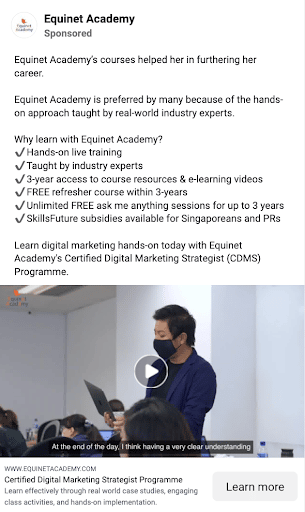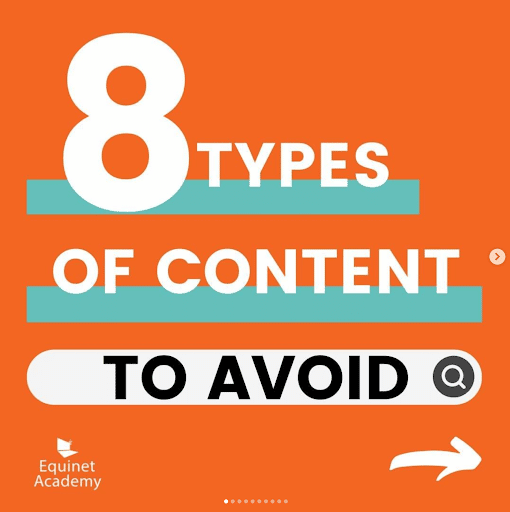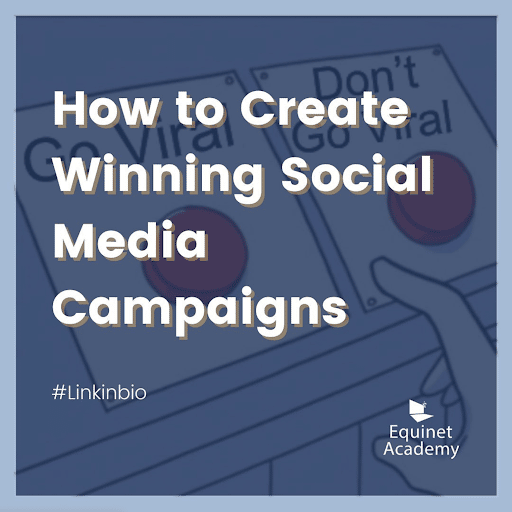Ad Copy and Creative Best Practices Guide to Make Your Ads More Engaging
With the prevalence of the internet and social media, advertising a brand and its products has never been easier. Any brand can promote their products and reach a wider audience, gaining new customers and fans every day. However, with this new ease and accessibility, there is an overabundance of digital ads being plastered across websites and platforms.
Therein lies a new problem: standing out from the crowd. With the constant bombardment of ads that users receive on a daily basis, many will find their ads simply being scrolled past and rarely ever interacted with.
With this new issue for brands and businesses, you may be deterred from advertising online entirely. However, there is a way to circumvent this issue — through creating a compelling and engaging ad.
Digital ads are made up of two elements that will determine their efficacy: the copy and the creative. How you frame and portray an ad matters more than what it is you’re promoting. If your ad is compelling enough, a user’s curiosity and interest is what will drive them to click through and browse your business.
In this guide, we will detail the best practices for ad copy and creative for you to apply in your own digital advertising strategy and effectively stand out from the crowd.
Best Practices for Ad Copy
1. Attention-Grabbing Headlines

Example of Headline
When it comes to digital advertising, you only have seconds to make an impression and hold a user’s attention. An impactful headline could make all the difference in your clickthrough rates and lead generation.
Think about your own internet habits — what makes you click on an ad? When something catches your eye, typically an aesthetically pleasing visual, the next thing you look at is the headline. You want to find out what exactly this ad is trying to convey and you look to the text for an answer.
When you write attention grabbing headlines, you hook a user to fully absorb and understand the ad you’re showing them and make the possible conversion from user to customer short and seamless.
There are three simple ways to create compelling headlines:
-
- Use questions to engage your audience — thought-provoking questions that make consumers want to read more. For example, “Are your ad spends getting too high?” or “Are you receiving the best traffic for your website?”
- Offer suggestions that can fix everyday problems. Solutions that are related to your products or services reinforces positive brand association in your audience. For example, “Prevent everyday headaches with this simple tool!” or “Grow your sales and Increase your leads today.”
- Simple and direct keywords in your headline help consumers resolve their search queries with relevant words. Such as, “The best dentist in Singapore” or “We offer a full range of digital marketing services.”
When creating an ad, your goal first and foremost is to grab and hold a user’s attention and writing a compelling headline is a surefire way to do so.
2. Use Relevant Keywords

Example of relevant keywords for Google Search Ad Copies
Including keywords in the body copy of a digital ad makes it easier for consumers (and search engines) to comprehend its message.
Striking a balance between specific and general keywords is essential, as both have similar but ultimately different agendas. Specific keywords target recurring consumers while general keywords target broader audiences to attract new consumers.
Ensure the message is readable and concise; do not bombard the body copy with keywords as it can often make the message confusing and penalise your ad. As mentioned, it only takes a short moment to grasp a user’s attention with an ad so using too many keywords can cause audiences to lose interest and scroll on.
Additionally, comprehend and recognise the impact of keywords before creating an ad. Keywords have to be used with a clear objective — think of your audiences’ intent and reason for using keywords in their search.
3. Offer Value to Your Audience
Write ad copies that speak to your target consumer. Don’t waste their time with unrelated offers. Clicks are great, but make sure they are qualified so as not to waste your ad dollars.
Define your targeted audience before you write your copy. Profile your persona using insights from your audience. Ask yourself:
-
- What kinds of questions do they ask?
- What are their common pain points?
- What are their personal demographics?
- What kind of content do they consume?
- How would our products/services make their lives better?
This will help you develop a strong understanding of who your reader is and will allow you to better speak their language.
Additionally, consider creating a customer persona which is a fictionalised character that embodies the traits found in your ideal customer. A customer persona is more specific than a typical target audience analysis which allows for better tailoring to appeal to your audience.
For a more in-depth look into creating a customer persona, check out our guide here.
4. Include Compelling Call-To-Actions (CTAs)

Example of a Learn More Call-To-Action (CTA)
It is important to include call-to-actions to guide the audience to take a desired action. Use straightforward words to tell readers what to do.
Consider your objectives before drafting CTAs. Effective CTAs use direct verbs such as “follow”, “visit”, “like”, which are clear, instructing audiences to perform an action.
5. Conduct A/B Tests
A/B testing is a feature that compares two variations of the same ad to determine which performs better. This allows you to compare the two variations in terms of performance and you can then determine what combination of copy and creative works best.
When running an A/B test, be sure to only have minor differences between the two ads as having wholly different ads will leave you unable to consider what specifically about the copy worked best.
Consider applying different keywords and combinations in different headlines and/or body copies, for example. When you do so, you get a better idea of what kind of language and words used has a better effect on users interacting with your ad.
6. Use Power Words
Power words are words often used by copywriters that trigger psychological reactions in readers, such as to evoke curiosity or trust. When you utilise power words in your digital ads, you help convince users to take up your desired action which would, in this case, be to click through and follow the CTA.
Power words are subtle as the intention behind using those words lie on the emotions it evokes in readers, as opposed to just promoting your product or services. You rely on their emotions to encourage them to click through.
For example, if you wanted to evoke trust in your readers, you should use power words like “award-winning”, “endorsed”, “authentic”, or “moneyback”. When you read these words, what thoughts pop into your head?
To most, the use of these words show credibility. The everyday instances where these words and phrases are used have caused a natural association with trust. These words have their own connotations that, to a reader, makes you appear more trustworthy.
As another example, if you wanted to instil a sense of urgency in your audience, you may use words like “limited time”, “ends today”, or “only XX left”. Adding a sense of urgency to your ad copy could convince users to take that action quickly and easily.
Therefore, due to its psychological reaction, using power words in your copy may be what pushes your audience to finally take action.
7. Write for Mobile Users

Example of Expanded Text Ads
In 2022, as noted by Statista, mobile devices account for approximately half of web traffic worldwide. As smartphones get smarter and more capable, it is safe to assume this figure will only go up.
As such, it is crucial for digital ads to be mobile-optimised, to ensure your ads are reaching all users effectively. We would recommend using expanded text ads as they have been designed to be mobile-optimised.
Expanded text ads allow for more text to be displayed to help you better convey your message. Expanded text ads feature up to three headlines, two descriptions, and up to 90 characters for each description. Consider using expanded text ads to help in becoming mobile optimised.
8. Remember Character Limits
One of the most important factors to remember when writing the copy for your digital ads are the recommended or mandatory character limits on different platforms. Ensure that you write within this range as these platforms optimise their character limit to what performs best.
Users don’t appreciate being faced with a huge chunk of text and will be likely to scroll past and avoid interacting further with your ad. As such, always keep a reference for the word or character limits on each platform to ensure you keep within that range.
Best Practices for Ad Creatives
1. Use High-Quality Images

Example of an ad creative using high-quality image
First impressions make all the difference. When you create digital ads, your first goal is to grab a user’s attention and you do so with the help of a stunning visual. Your visual is what gives users their first impression of your brand.
Images help your audience understand what your brand is like; what you sell, what your style is, and how genuine you are. Avoid using blurry, pixelated, and otherwise low-quality images as that can deter users from interacting with your ads.
When you use high-quality images, you portray your company as more professional and legitimate and if the visual is compelling enough, users will be intrigued enough to interact further.
2. Showcase Offers
Everyone loves a good offer on the products or services that they need. If your ad campaign revolves around a sale or promotion, be sure to include that in your visual instead of only in the copy.
As the visual is what grabs a user’s attention first, use words and phrases that emphasise the promotion you are currently running. Include words such as “Sale” or “Discount”, to drive a user’s curiosity and encourage them to click through. While it should not be the main focus of a digital ad, it is best practice to showcase the offers you have available within the image itself.
At the same time, ensure that the text overlaid on an image fits within the restrictions of different platforms. Images with too much text tend to perform badly so various platforms have introduced restrictions on overlaid text to help you optimise performance.
3. Make Your Product or Service the Main Focus
What are you selling your audience? Every ad should feature your product or service, to prevent users being unsure what it is you’re trying to sell them. As you’re showing these ads to your target audience, your brand is trying to help them address and solve their pain points so it is often best practice to feature your product or service.
When you include your product or service as the main focus, you prevent misleading your audience and when they click through, they know exactly what it is they want from you. While you should include other elements, make sure your product is what stands out the most in your ad visual.
4. Create Multiple Formats and Ratios
On Google Network especially, there are over 40 different display ad formats available and the more formats you include in your ad group, the higher your chance at reaching your goals for impressions.
Include a varied mix of formats and ratios in your ad group, using the same copy in each, to optimise your ad reach. When you create variations, you can also determine which formats perform the best among all the ads you run within a campaign.
According to Google, these five formats are the highest performing:
-
- Large Rectangle: 336 X 280
- Inline Rectangle: 300 x 250
- Half Page: 300 x 600
- Large Mobile: 320 x 100
- Leaderboard: 728 x 90
5. Add Your Logo

Example of a creative visual with a brand logo
Your logo perfectly encapsulates your brand and as such, it should always be included in digital ads. You want users to associate that logo with your brand and to instantly recognise it as your brand once they see it.
Do not overlay your logo onto your image as that is often not permitted by Google; instead, consider including a small version of your logo in one of the corners of your digital ad. Ensure it’s visible when viewed but does not detract from the main focus of your ad which should be your products or services.
6. Use Clear Fonts

Example of using clear fonts on an ad visual
Your visual should never be cluttered with text — generally, the rule of thumb is to stick to less than 20% of the image containing text — but your text should be eye-catching enough that it can stand out from the crowd and grab a user’s attention.
We would recommend using bold fonts in your ads that are easy-to-read for anyone; avoid using very thin and small fonts and, at times, avoid using cursive to ensure easy readability. Additionally, ensure that firstly, the colour of the text and the colour of the image do not clash as some colour combinations can make it difficult to read text and secondly, do not use all uppercase or lowercase text as that appears improper.
Key Takeaways
While this guide is not a definitive standard for what you should do when creating a digital ad, it provides a foundation for you to start off on the right foot. Ensure you follow these best practices when creating digital ads across all platforms.
However, if you’re still struggling with your advertising or copywriting efforts, do consider signing up for one of our many digital marketing courses held here in SIngapore.
At Equinet Academy, we offer the Certified Digital Marketing Strategist (CDMS) Programme, which covers a wide range of digital marketing areas that will help you become a fully-fledged digital marketer.
The CDMS Programme covers the following six modules:
- Digital Marketing Strategy
- Content Marketing Strategy
- Search Engine Optimisation
- Digital Advertising
- Social Media Marketing
- Digital Marketing Analytics with Google Analytics
The completion of these modules will lead the learners to attain a Certified Digital Marketing Strategist Certificate, bringing you one step closer to achieving your digital marketing goals.
Alongside this, we also offer other courses such as Copywriting and Content Writing, which will help you understand the necessity of powerful copy and how to achieve it.
Shaun comes from a rich background of B2B sales, social media marketing, demand generation, marketing operations and marketing strategy. Playing a key role in previous marketing agencies, Shaun had the opportunity to consult top brands like Grab, Oracle, Microsoft, Salesforce, NUS (and more) with their online marketing & go-to market strategy. With his vast experience in the industry, he is a trainer for the Digital Advertising, LinkedIn Sales & Marketing, and Website Optimisation (Conversion Rate Optimisation) courses here at Equinet Academy.